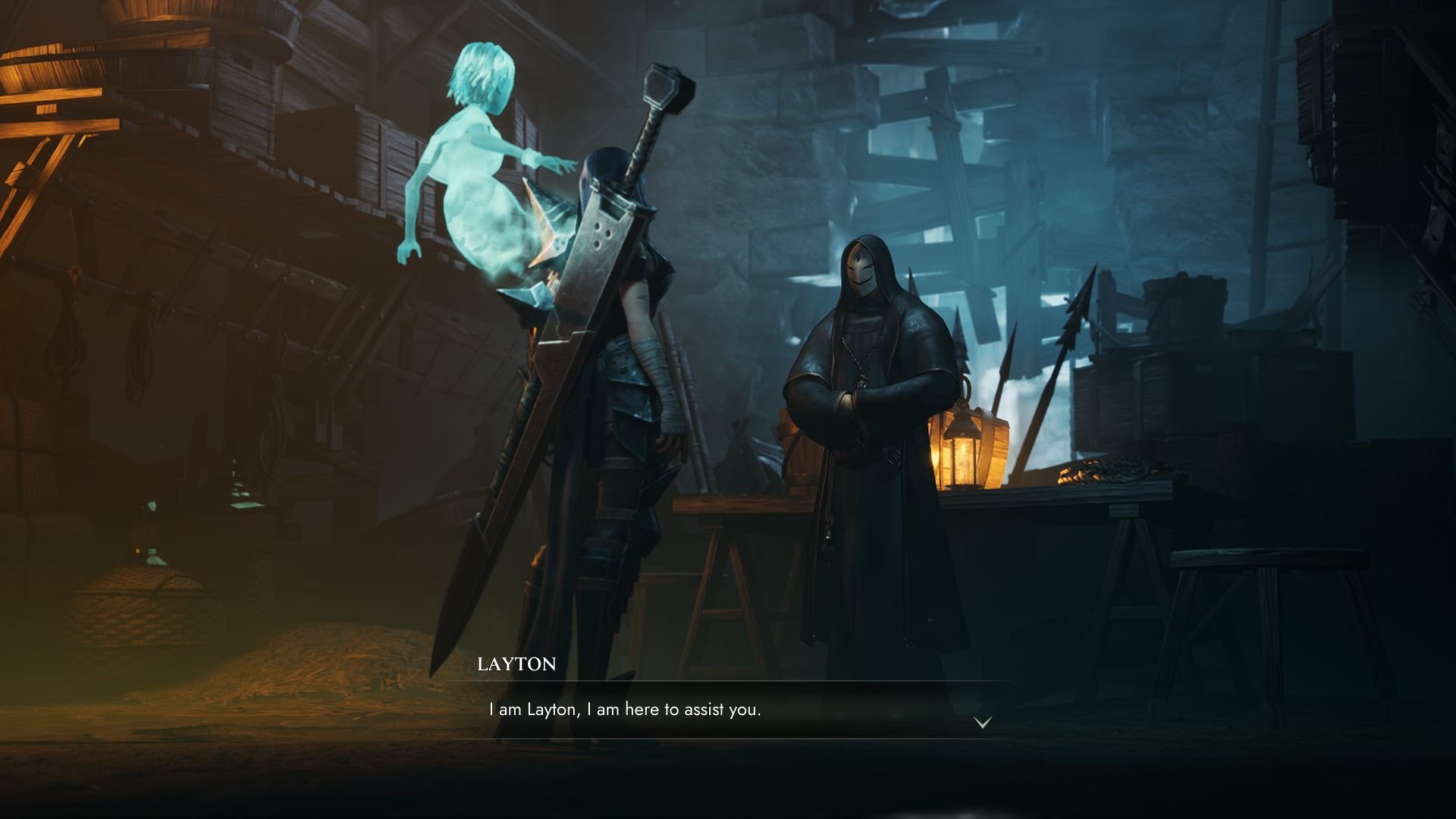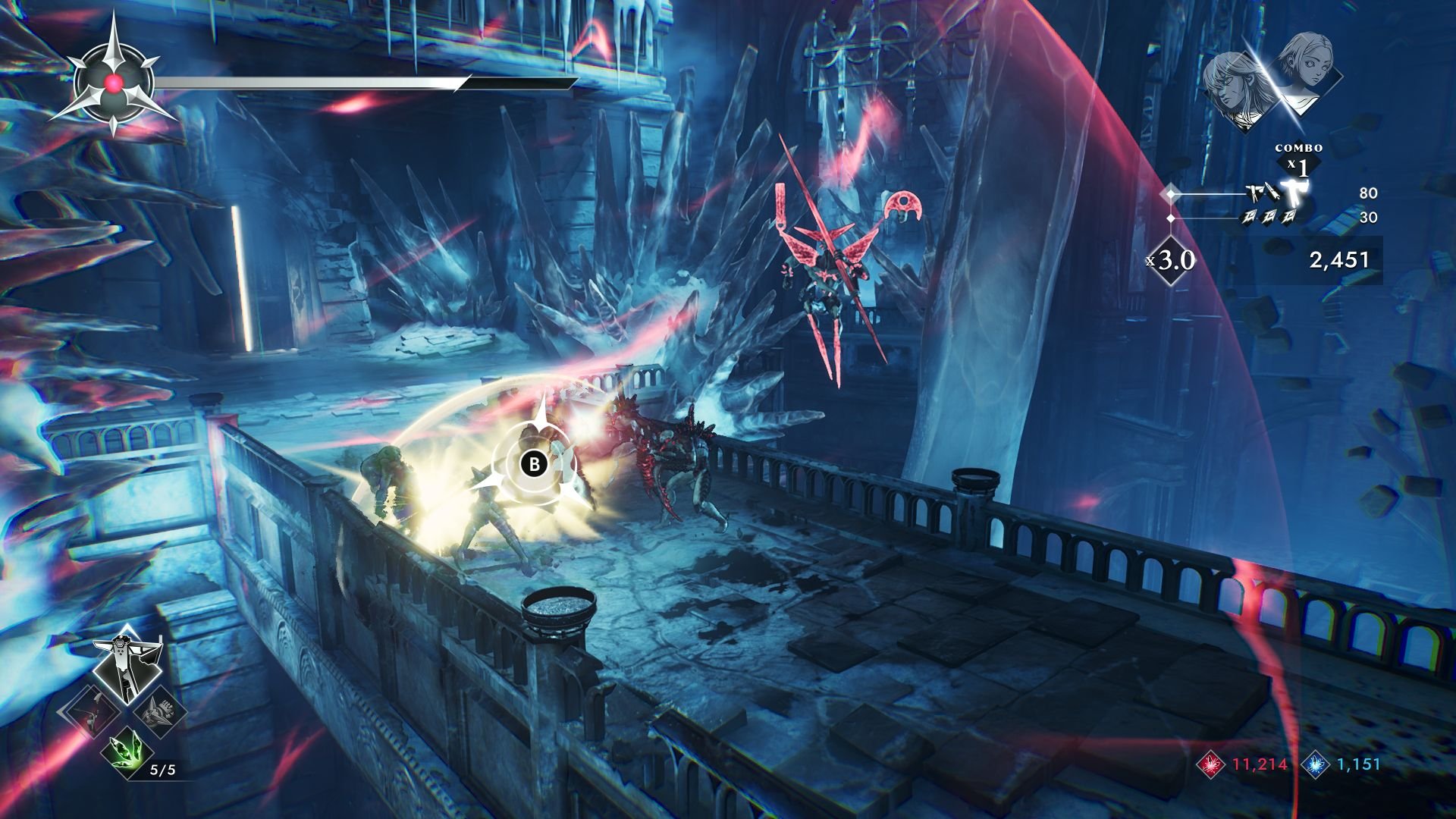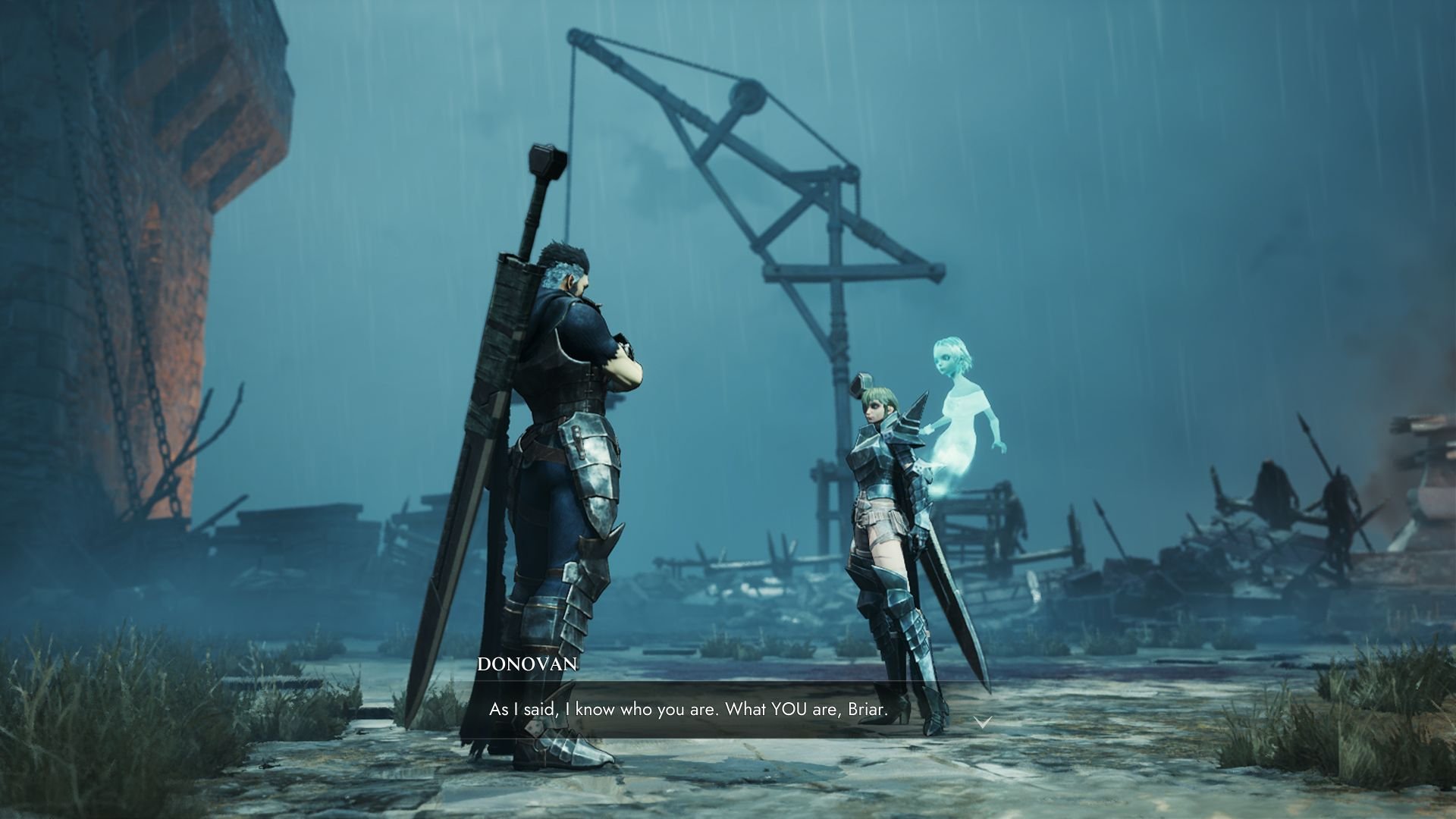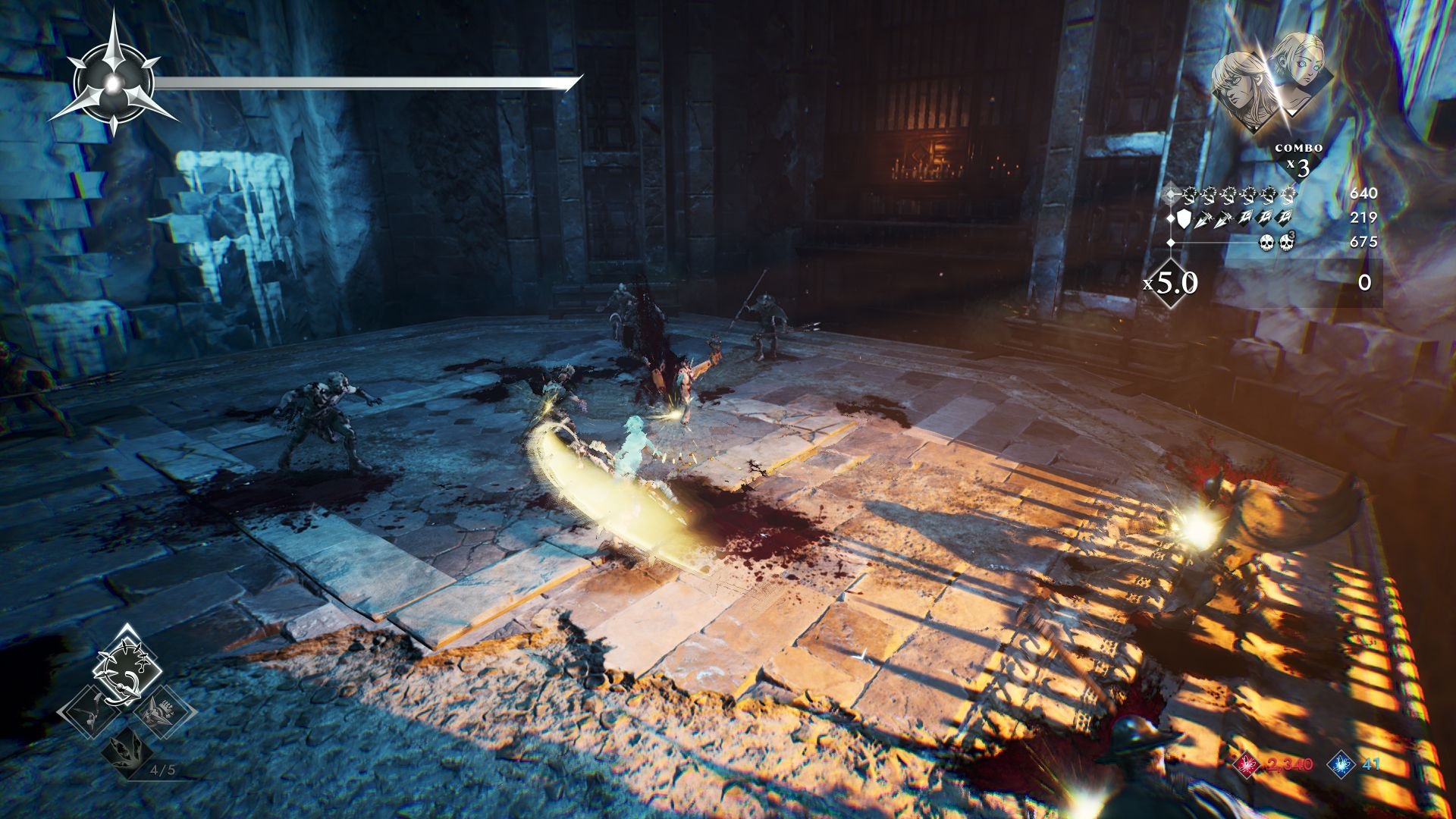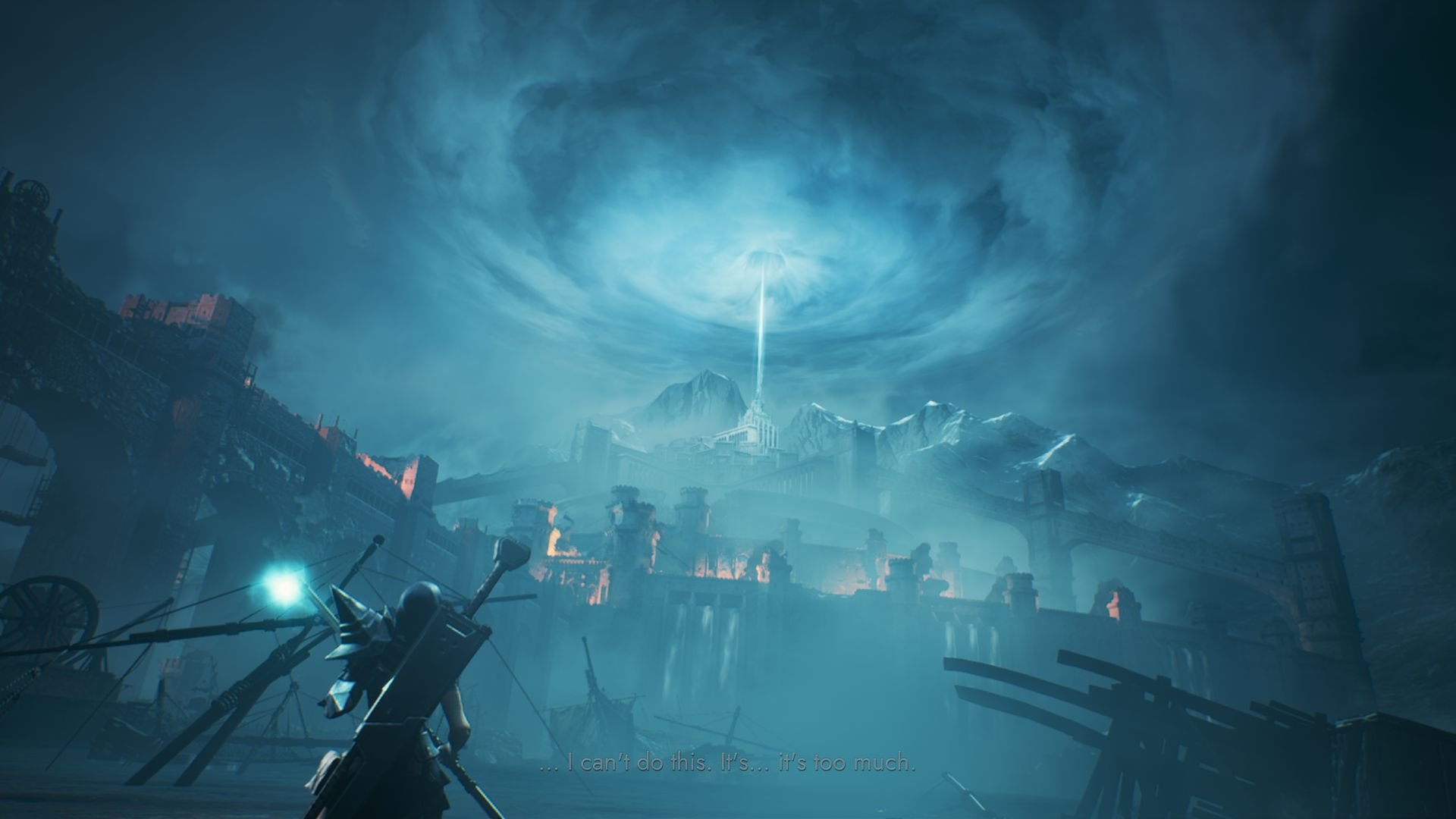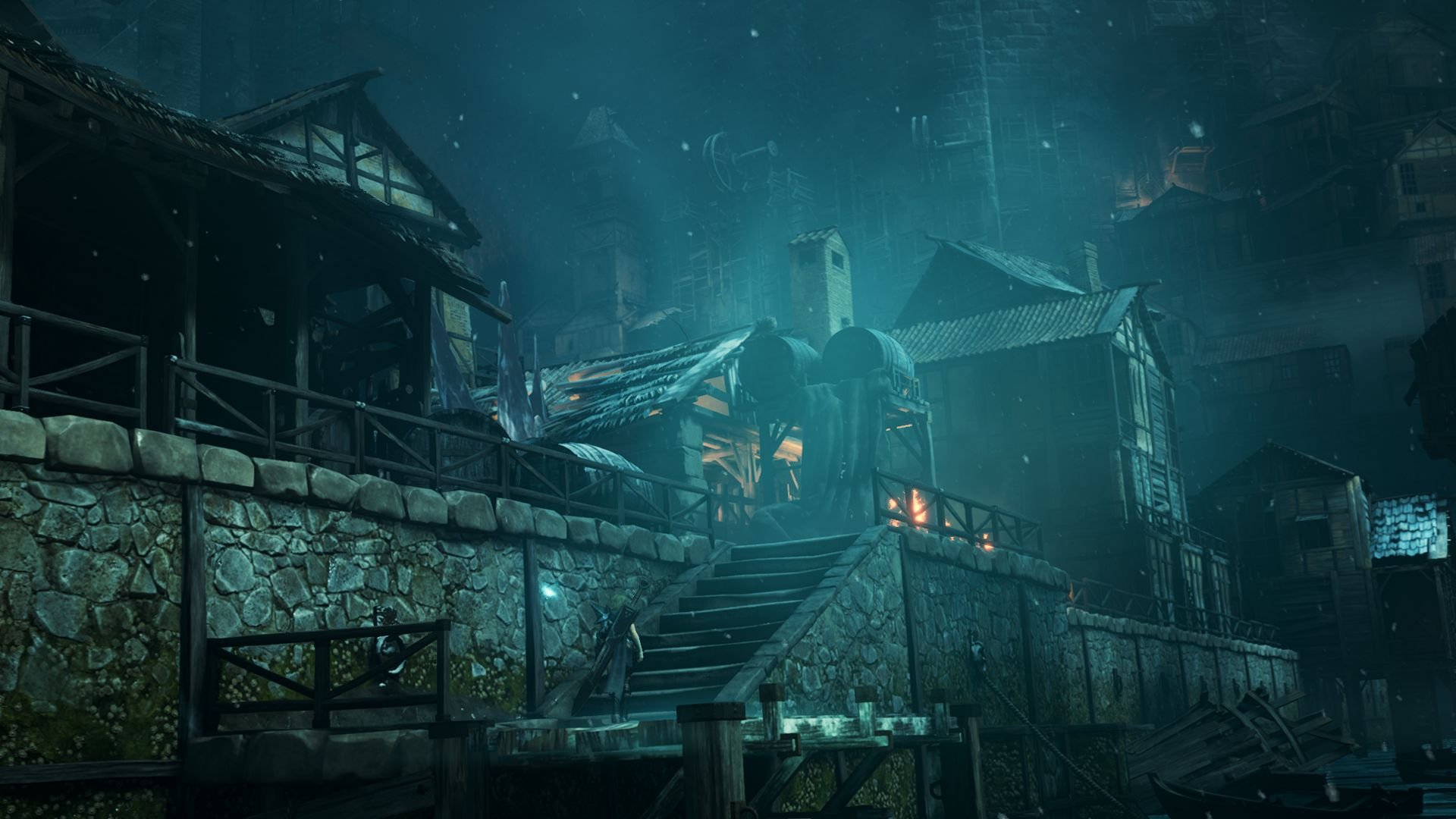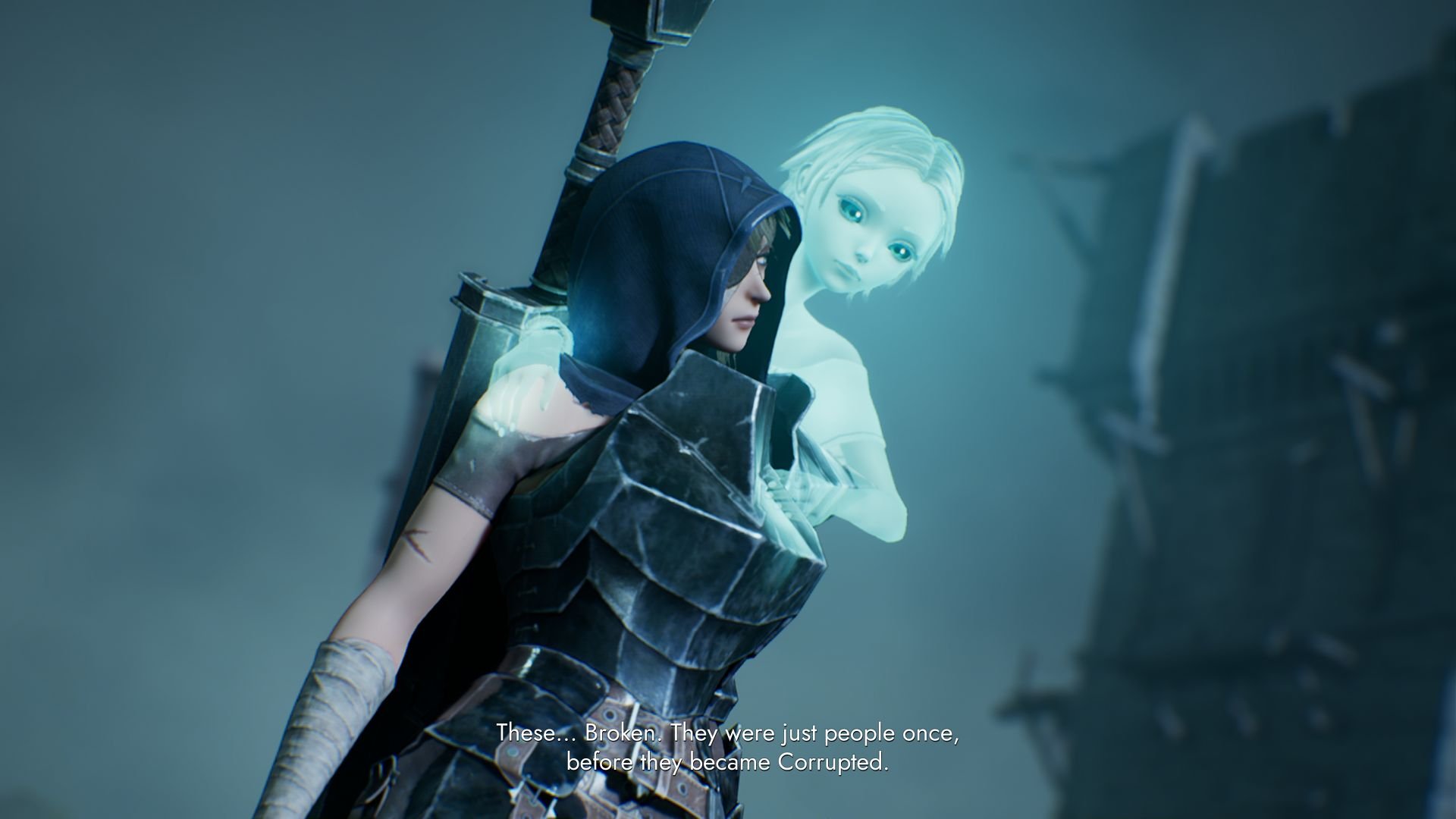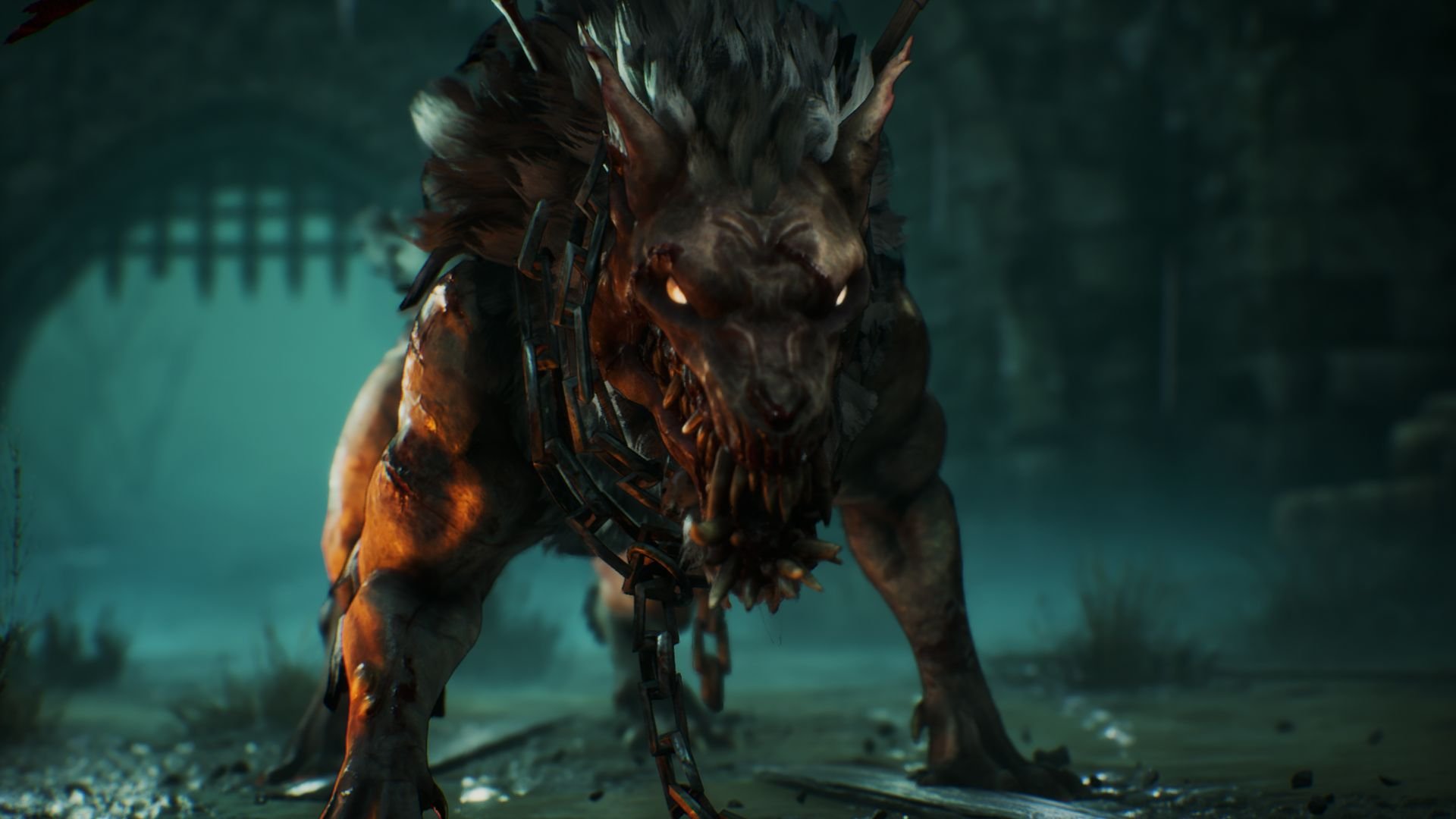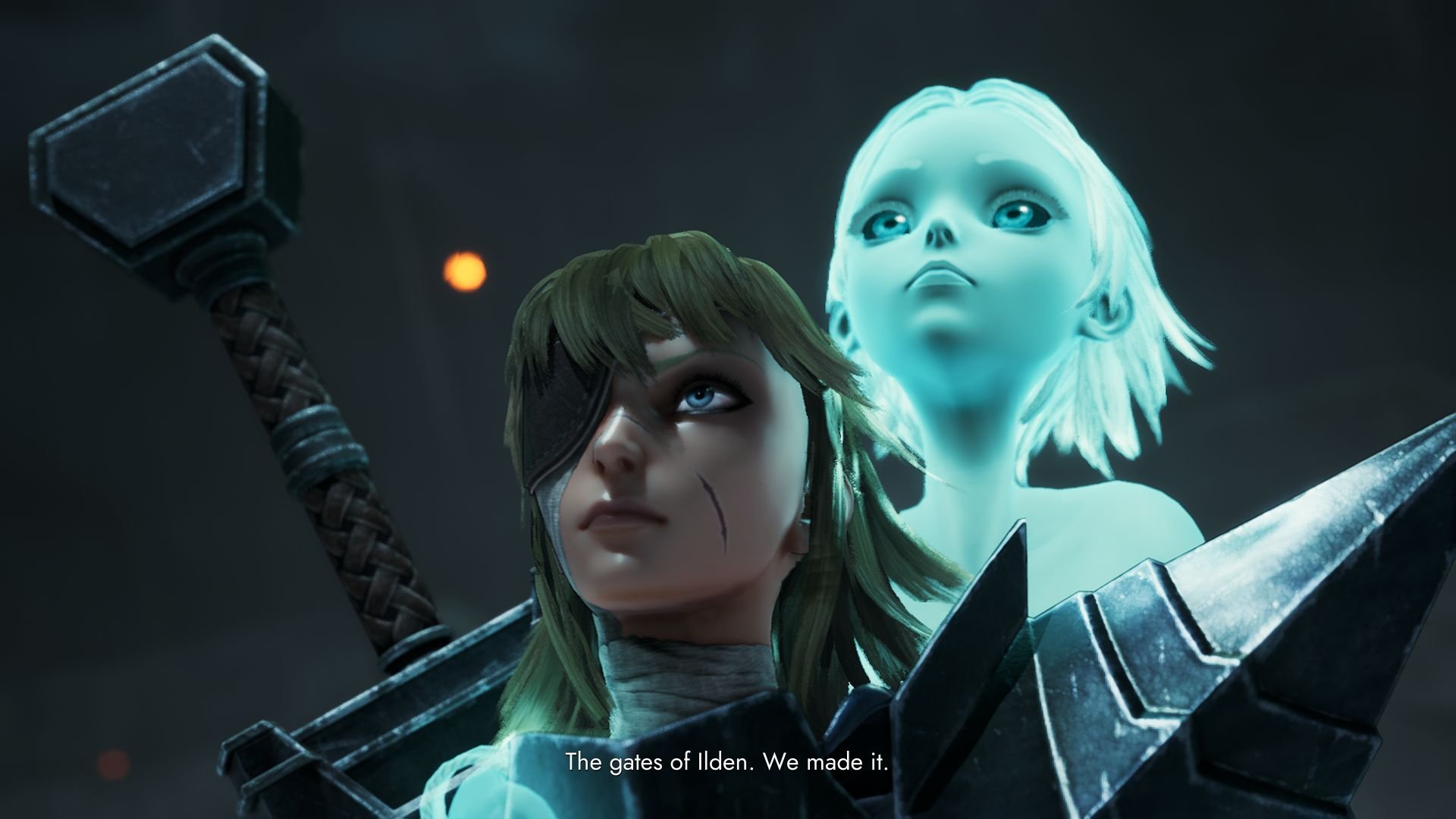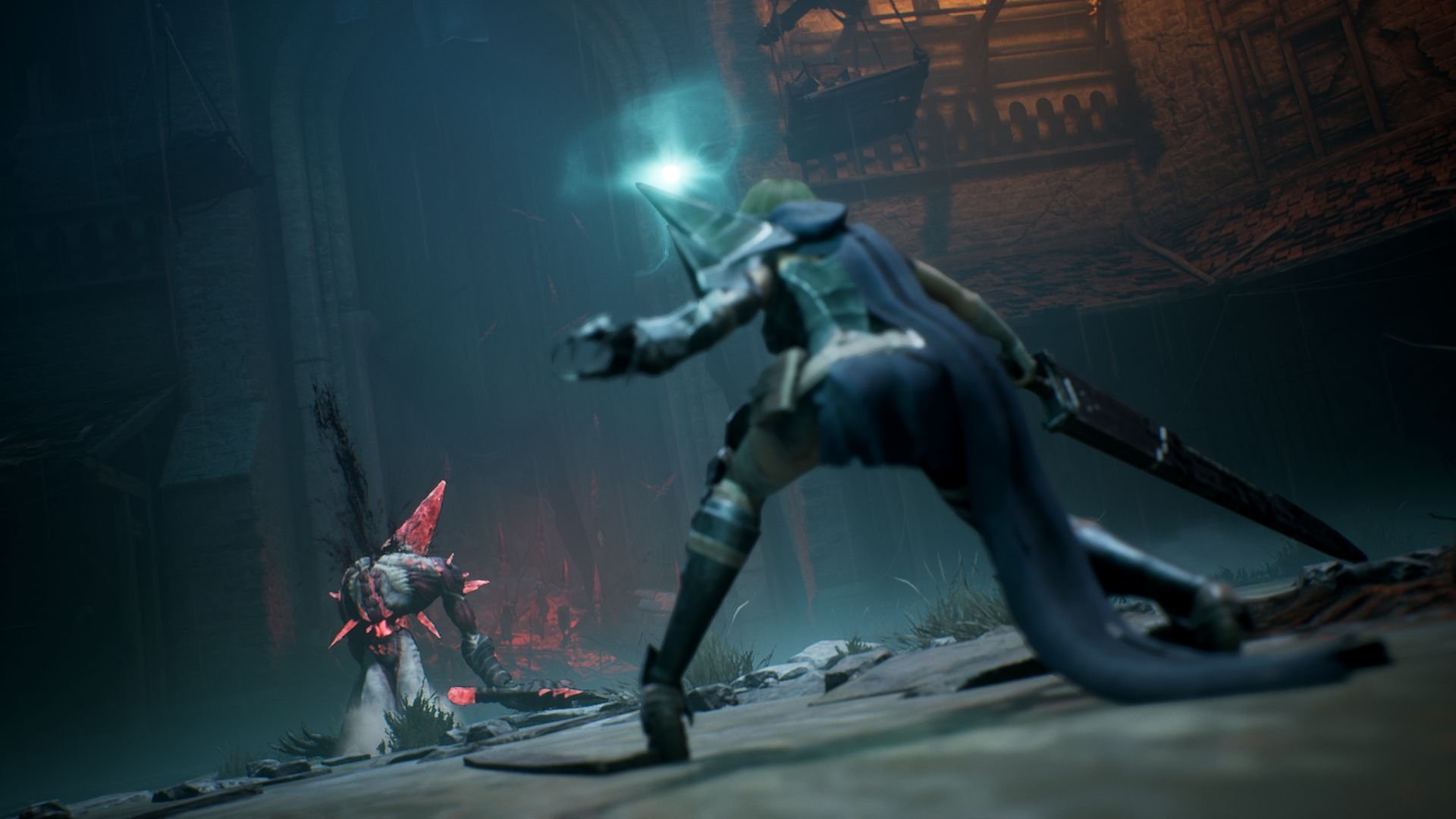“The Solstice of Souls is upon us…”
Soulstice was a title that flew well under my radar until mere days before it was released. This DmC flavored action title about the bond between two sisters, set in a world that is tearing itself apart, certainly seemed to come out of nowhere. While it made an appearance at the Modus E3 showcase this past spring, there has been little to no real mention of this game anywhere, and that is truly a shame as it’s easily one of the best games I have played this year.
Now, when I say ‘DmC’ flavored, I do mean the Ninja Theory iteration more so than the original Capcom-led series, although, you can argue that DmC itself is a product of its own inspirations as well. Regardless, this is by all accounts a Devil May Cry game in the same vein as how Soulslike games often take inspiration in such a way where the gameplay, items, and mechanics, are often identical to that of their Fromsoft inspirations. Soulstice is that through DmC, as it takes a great deal from the western reboot in nearly all of its combat and gameplay systems. While imitation is one thing, it is another to have those borrowed elements work as confidently, as cohesive as they should be to produce an equally impressive experience, but somehow, Reply Game Studios has done it, with a few rough edges, anyway.
Soulstice tells the story of Briar and Lute, two sisters who are tasked with joining another pair of Ashen Knights at one of the three sacred cities in the Holy Kingdom of Keidas. While there was a time of peace across the Kingdom, recently, the world has fallen into despair, plagued by Wraiths that have returned to this realm, spewed forth by an ancient evil that has long been dormant. However, as Briar and her sister arrive at Ilden to investigate such an incursion, her would-be companions are nowhere to be found, leaving the pair then to have to fend for themselves.
Now, Briar and Lute are not your typical arrangement of siblings. Briar is an Ashen Knight, a hardened warrior that fights for a religious outfit called The Order, but is also a being known as a Chimera. A Chimera is a type of soldier that has been engineered by The Order to fight the Wraith threat through supernatural means. A Chimera isn’t just that of one being; however, as they are infused with the soul of another. This is where Briar’s sister, Lute, comes into play. Lute is, by all accounts, a ghostly form of her prior self, fused into Briar’s physical form via a purple crystal in her chest to give her almost untold power. While you are given some of their backstories at the forefront of the journey, Soulstice does a fantastic job at diving deeper into that narrative well for more, rolling out bits and pieces of the origins of their union as the story calls for it.
While Chimera are devastatingly powerful warriors, they are also highly unstable, and much of the journey has Briar struggling with that very instability as she obtains more power in order to defeat an unknown evil that lays in wait for her and her sister. This instability comes in the form of an act called transcendence, an unfortunate fate that befalls most Chimera as they become the very thing they are designed to kill. As Briar and Lute attempt to discover the reason for the incursion in Ilden, Briar will continually struggle with her own stability as both she and Lute attempt to keep the pair of them alive.
The relationship between Briar and Lute is constantly engaging. The game could have done a few cliche things with them, such as having them on the outs after some sort of disagreement between the two or having Lute gone for an extended period of time, but it keeps their bond constantly at the forefront, using each other as motivation when the going gets tough, and it certainly does. The pair will frequently talk with each other, but some of that dialogue does repeat a tad too much, but it was never too often to really get on my nerves. I really enjoyed how they worked together to solve many of the game’s untold secrets, putting the pieces together as a unit instead of one character feeling wasteful in being part of the overarching story.
Throughout the roughly 15-20 hour adventure, Briar and Lute will encounter a small cast of characters. You’ll stumble across Donovan, a fellow Ashen Knight of the highest order, tasked with investigating the crisis in Ilden, seemingly apart from the mission that Briar and Lute have been tasked with themselves. He is highly regarded for his skill, and your first few interactions with him clearly show his experience. His involvement in the story is an interesting one, especially as while he is a Chimera himself, he chooses not to rely on his ghostly partner at all, which allows for him to have this element of mystery to him.
Then you have Layton, who acts as The Order’s liaison for Briar and Lute for the mission at hand, rolling out exposition and lore as well as acting as a shopkeeper for the pair, even granting you a few weapons periodically throughout the story. He has a rather dry wit and is often unimpressed by the duo, even surprised that they remain alive as you continually meet up with him. Much like Donovan, his involvement here is equally mysterious and really became a character that I quite enjoyed, especially as he starts to open up to the sisters, seeing them for what they could be instead of the inexperienced pair he met when they first appeared at the city.
As you investigate the incursion in Ilden, you will encounter a wide range of enemies, ranging from the Corrupted, the Possessed, and the Wraiths. Corrupted enemies range from standard infantry to wolves, to winged creatures that are mutated or grotesque in some bizarre fashion. However, when it comes to the Possessed and the Wraiths, which are enemies that are far more bizarre in nature, this is where Soulstice starts to borrow from DmC in some pretty interesting ways.
In DmC, Dante had access to both Demon and Angel weapons, in which certain enemies could only be killed via a particular type. The same idea is presented here but through what is called the Field System. Here, Lute evokes a field around Briar that affects either the Wraiths (Blue) or the Possessed (Red). These fields, the Evocation Field and Banishment Field, respectively, last for a short period of time before Lute will need to recharge her power, or will fade into nothingness for a short penalty cooldown should you cause her to push past her limits. While there are items you can find or purchase to aid with it, I found it much easier to just deactivate the field and let it charge back up. You’ll also be able to upgrade Lute in ways where you can get more out of each field and use it more effectively.
These fields are also used to solve many of the game’s puzzles if you can really call them that. Each environment has a series of ghostly blue crystals or bright glowing red crystals, that will require you to trigger each field to properly destroy them. These range from large quantities of crystals to hack away at, to doors, platforms, and switches that use these systems as a means of halting your progress or hiding the various healing items you can save for when you really need them. These eventually get more varied and start to translate into traps to avoid, such as exploding crystals that can be safely destroyed while in the Evocation Field or mines being activated via the Banishment Field, which are usually around placed around red crystal elements that you’ll need to hack away at.
When it comes to combat, the fields don’t really do much other than allow you to dismantle enemies that are normally invulnerable to any sort of regular attack. It’s a shame that each field doesn’t heighten some aspects of your combat skills, since certain enemies have traits that only exist in that enemy class. Had the Evocation Field made you faster or able to bridge the gap between you and your foe quicker, or the Banishment Field allowed you to dish out harder hits, then there could have been some interesting combo attacks or greater meaning to what the fields could do apart from having you only able to deal damage based on their color. It’s a great system in theory but could be far more interesting if they developed it further in a potential sequel.
When it comes to exploration and combat, Soulstice offers up two methods of presentation. Exploring is via fixed camera angles similar to what Devil May Cry initially offered, whereas combat allows you to spin the camera around, taking away the limited view you have while platforming. While the fixed viewpoint can result in a few missed jumps due to the angle, I found myself only really missing jumps if the camera was pulled back just a bit too far. Thankfully, that isn’t the case too often and most of the time the game is pretty close up.
Similar to DmC, Soulstice is focused on a series of unique weapons and combo-based attacks. While you will have a limited series of weapons and skills early on, you will eventually gain quite the arsenal and move-set as you purchase more skills as you earn the currency to do so. Combat, environmental crystals, and your overall combat performance will help fund these expenses as some skills come with quite the expensive costs to unlock them. Each encounter is graded by a series of various point totals as you earn an overall rating for everything you do in combat. You’ll also track down challenges to complete that have you performing a set objective such as defeating all enemies within a time limit or doing so without touching the ground.
Combat is handled by defeating all enemies in that set encounter. There will be a field blocking you from moving on until combat is done, and the arrangement of enemies will often see a mixture of all three types, making you constantly swap between fields and throughout a series of weapons you’ll have access to. The D-pad’s left, right, and up, allow you to quickly access each of the six additional weapons with down serving as a quick way to use a healing shard. While you’ll always have your Ashen Vindicator, a long sword that feels ripped directly out of Beserk, your additional weapons range from the Enforcer, which is a great sword/hammer combo that you’ll have early on to close range efforts with the gauntlets, daggers, and batons, with the latter firing off a cannon blast after a combo. Picking up the rear is a duo of ranged weapons in the bow and the whip, which reminds me a great deal of Ivy Valentine’s weapon from Soul Calibur. While the weapons all have their uses, I would have preferred a polearm or staff instead of the daggers as the game really felt it needed another ranged weapon in your toolkit.
Regardless, the ability to easily tap left and select my bow or press it again to select the daggers made it extremely easy to swap between each and every weapon without worrying about what is equipped in a menu or anything else to stop the flow of combat. As each weapon has advantages and disadvantages to certain enemies, I found the flexibility of having everything accessible to me all at once to be absolutely rewarding in every single combat encounter. Whenever guards or champions would spawn, I would swap to the Hand of Retribution gauntlets and power up their charge, shattering large chunks of their armor before switching to the Enforcer to dismantle their now fleshy form.
Combat can be intensely fast, especially as you have to manage Lute’s entropy meter, ensuring that you are not pushing her too hard on maintaining her fields. Having to switch back and forth depending on the arrangement of enemies could have become tiresome and tedious, but the variety of the different weapons and abilities always made combat thrilling and fast-paced where I found a balance on how to keep all the game’s combative elements in check. While combat is pretty damn fluid in most cases, there are two pretty sizable drawbacks that can sour what the game is trying to accomplish here.
First, attacking flying enemies can be much harder than it needs to be as you have very limited ways to bridge the gap apart from a few skills tied to certain weapons. While you do have the bow to address some of that, that brings me to the other issue, the targeting. It’s wildly inconsistent regardless of whether it is the manual targeting or relying on the automatic targeting, both don’t really track too terribly well. It also doesn’t help that Briar can often cleave enemies so hard they fly across the environment, forcing you to dash run as fast as you can and sometimes reactivate the field since some enemies fade from view if the Evocation Field isn’t up and touching them. It can be quite a hassle when this situation occurs, and it is pretty damn often.
Apart from Briar, Lute also works her way into combat to great effect. Lute effectively works as a support character, auto-attacking enemies, freezing them in place, or preventing ranged attacks from connecting to her sister. Using her effectively allows you to counter-attack nearly any enemy, and as you upgrade her skills, she starts to become a damn impressive powerhouse alongside Briar. She has a range of different upgrades to work on as well, with a special item that increases the variety of what she can learn. And, one feature I really recommend checking out is the assist settings that allow Lute to act on her own, auto canceling anything that comes your way and letting her almost act as her own person, instead of having to worry about everything around as Briar as you are simply trying to stay alive. I played this way for about half the game to see how each side of the setting worked and felt really good about both playstyles.
As you fight alongside Lute, attacking and canceling attacks, you will build up a Unity Meter. The better you do, it allows you to pull off a series of special attacks. Now, I won’t dive into much more other than saying that this is another element of the game that borrows from Devil May Cry pretty intensely as it serves as a way for Briar to really cut loose and attack with almost no limits, regardless of what field needs to be active or not. Eventually, you’ll start to pull these Unity attacks off pretty regularly, and eventually, you’ll have a single use of pressing both LT and RT triggers, but later on, that attack can end with another set of LT and RT presses for one last big hurrah.
Soulstice does a remarkable job at offering a visually striking experience with some well-directed action scenes and a boatload of moments designed to make Briar come off as a total badass. Environments can tend to repeat in some cases until you start to explore entirely new areas later on. The Milan-based studio has produced a damn good-looking game here with some incredibly cool enemies and frankly, one of the best-looking bosses I’ve ever seen; seriously, the second to last boss is easily in my top five for best enemy designs I’ve ever seen. Character models can vary, especially with some animation that almost has a stop-motion effect, but to be honest, I sort of dug it. Characters do have a slight cel-shading technique to them with a small appearance of a black line creeping in to separate some facial features, but not enough to hold the game to that particular art style. Overall, Soulstice has a kick-ass art direction that I was very much into.
With several actors pulling double or even triple duty, the voice talents here serve the game rather well. Metal Gear Solid V’s Stefanie Joosten, who voiced Quiet pulls out performances for both Briar and Lute, and honestly, you cannot even tell. Despite the limited budget this team likely had, there is a substantial amount of voice work here across the few characters present and all of it works to give each character a suitable voice to match their personality. The rest of the game features a lot of howling wind, and some decent ambiance, and while the soundtrack to fight alongside to all of that is decent enough, it is by no means memorable or anything to really write home about.
Right from the moment I checked out Soulstice, I knew I was going to have a good time. However, I had much more than that as Soulstice really impressed me with its well-paced action, tried and true combat; despite the range issues, but most importantly, its story of Briar and Lute, one that certainly has me incredibly invested in what the pair do next. While taking inspiration is one thing, peppering your game with a vast amount of familiarity, it’s another to mimic another so perfectly, and Soulstice does a remarkable job at doing just that.
Developer - Reply Game Studios. Publisher - Modus Games. Released - September 20th, 2022. Available On - Xbox Series X/S, PlayStation 5, Microsoft Windows. Rated - (M) Blood and Gore, Violence, Nudity. Platform Reviewed - Xbox Series X. Review Access - Soulstice was purchased by the reviewer.



